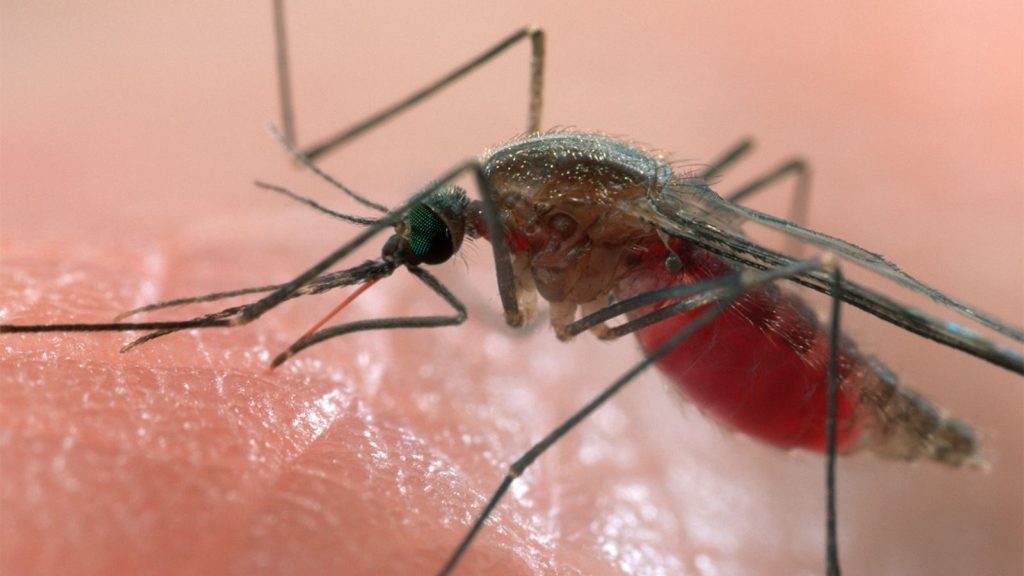After identifying eight cases of locally transmitted malaria in Florida and Texas this summer, the CDC is recommending that healthcare providers consider malaria in the differential diagnoses of patients who present with unexplained fever — particularly if those patients are homeless.
In each state, a single imported case preceded each index locally transmitted case. It’s still unknown if the imported and locally transmitted cases were linked, but there’s no evidence that the Florida and Texas outbreaks were linked, reported Dawn Blackburn, BVMS, of the CDC’s National Center for Emerging and Zoonotic Infectious Diseases in Atlanta, and colleagues.
From May to July, public health departments in two Florida counties and one Texas county sought CDC confirmation of suspected cases, Blackburn’s group wrote in the Morbidity and Mortality Weekly Report.
Lab testing confirmed the presence of Plasmodium vivax parasites in blood smears from all of the patients, none of whom had any history of international travel, blood transfusion, or organ transplant. One patient had recently used IV drugs, but did so safely, the authors said.
The last outbreak of locally transmitted P. vivax malaria in the U.S. occurred in 2003.
Although unrelated to these cases, CDC also identified a case of locally transmitted Plasmodium falciparum malaria in Maryland in August. After hospitalization and treatment, that person recovered.
“Although the risk for autochthonous malaria in the United States remains very low, U.S. clinicians need to consider a malaria diagnosis in patients with an unexplained fever, especially in areas where autochthonous malaria has been recently reported,” the authors noted. “The occurrence of the current autochthonous cases underscores the potential for imported malaria cases in areas with competent vectors to produce local mosquito transmission of malaria parasites.”
The first sign of malaria in Florida was an imported case identified in late April. In the third week of May, the Florida Department of Health requested a telediagnosis from DPDx, CDC’s interactive parasitic diseases website, to confirm a Plasmodium species recovered from a patient in Sarasota County — the same area as the imported case — with symptom onset around May 3. Clinicians suspected malaria in this person, although the patient reported none of the typical risk factors.
P. vivax was confirmed by PCR testing, triggering a case-finding investigation in hospitals in Sarasota and neighboring Manatee counties. Those facilities were also directed to perform malaria testing on every patient presenting with specific clinical criteria, including subjective or objective fever or chills with thrombocytopenia or anemia, splenomegaly, or abdominal pain, especially in the setting of homelessness.
The second case was identified in early June, triggering a mosquito-borne illness alert. Two more cases were reported shortly thereafter, which prompted an upgrade to a statewide mosquito-borne illness advisory and notification to healthcare providers. By the beginning of August, clinicians had identified two more cases, for a total of six; the seventh case was identified by syndromic surveillance. Surveillance also triggered testing in 30 other patients, who were negative for P. vivax by PCR.
Both Manatee and Sarasota counties began mosquito control activities immediately after the first case was reported. This included aerial and ground spraying with larvicides. Mosquito traps also recovered 407 Anopheles crucians mosquitoes, a major malaria vector. None contained sporozoites, but three had P. vivax DNA in their abdomens, indicating that they had fed on an infected person.
The Florida Department of Health also collaborated with local organizations to distribute insect repellent and bed nets to homeless people in the counties.
The sole Texas case was identified June 7. The person, employed in an outside job in Cameron County, sought care for an illness consistent with malaria, although not reporting any risk factors for the disease. After getting CDC confirmation of P. vivax, the Texas Department of Health tracked four other people working at the location, who had reported similar symptoms to their job supervisor in late May. One was negative on PCR testing, two chose not to pursue malaria testing recommended by the health department, and one couldn’t be reached.
The health department had also identified an imported case of P. vivax malaria in the same area, with symptom onset in early May. It’s not known whether these two infections were related, but the cases prompted mosquito control activities in three Cameron County sites: the workplace, the infected person’s temporary residence, and the residence of the person with the imported case. Mosquito traps recovered 71 Anopheles mosquitoes collected from these target sites. All of these were negative for P. vivax.
The CDC also took public action in response to the outbreaks. In June, the agency issued a Health Alert Network Health Advisory notifying clinicians, public health authorities, and the public about the cases. In July, CDC convened a webinar to educate clinicians on diagnosing and treating malaria.
Of the eight patients in the Florida and Texas cases, symptoms included fever in seven, chills in six, abdominal pain in five, and vomiting in five. All eight developed thrombocytopenia; six were anemic.
Although seven were hospitalized, none developed severe malaria or died. All recovered after treatment, which included artemether-lumefantrine (Coartem) for five patients and atovaquone-proguanil (Malarone) for three. Everyone was also prescribed primaquine to prevent relapse after ruling out glucose-6-phosphate dehydrogenase (G6PD) deficiency.
“Prompt diagnosis and treatment of persons with malaria can prevent severe disease or death and limit ongoing transmission to Anopheles mosquitoes and other persons,” the authors noted. “Continued reporting of malaria cases to jurisdictional health departments and CDC will help ensure robust surveillance to prevent, detect, and respond to autochthonous malaria in the United States.”
Disclosures
The researchers disclosed no relevant conflicts of interest.
Primary Source
Morbidity and Mortality Weekly Report
Source Reference: Blackburn D, et al “Outbreak of locally acquired mosquito-transmitted (autochthonous) malaria — Florida and Texas, May–July 2023” MMWR 2023; DOI: 10.15585/mmwr.mm7236a1.
Please enable JavaScript to view the

